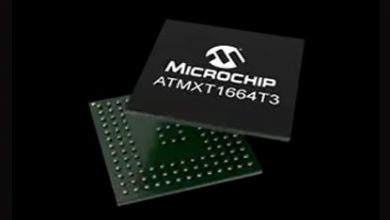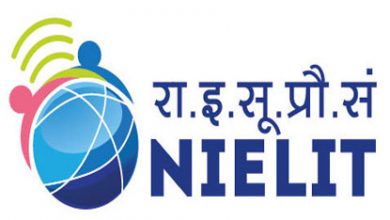(Additive) Manufacturing for Humanity: How 3D Printing is Saving Lives
By Santhosh Nagaraju, Senior Technical Specialist- Virtual Manufacturing and Costing, Hexagon & Santosh Ner, Senior Manager, BD, Virtual Manufacturing and Costing, Hexagon
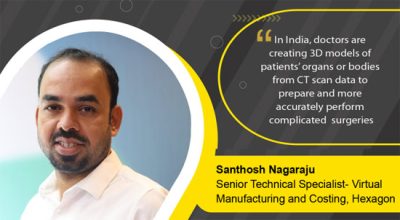 Sohail Akhter (not his real name), 50, from Bangladesh, was suffering from a rare and complex form of cancer, where a malignant tumour had destroyed his sternum (chest bone), along with 8 ribs on both his left and right. This deadly tumour was so large it also affected his pericardium, which is the outer layer of his heart and the lungs. (source)
Sohail Akhter (not his real name), 50, from Bangladesh, was suffering from a rare and complex form of cancer, where a malignant tumour had destroyed his sternum (chest bone), along with 8 ribs on both his left and right. This deadly tumour was so large it also affected his pericardium, which is the outer layer of his heart and the lungs. (source)
Desperate, he searched far and wide for a doctor and hospital who would treat him, only to be let down because no one dared to operate on him: if the cancer were to be removed, there was no way to repair the damage or indeed, replace his sternum and ribs– both which were essential for him to breathe normally. Without them, he would be dependent on mechanical ventilation for the rest of his life.
Finally, however, he went to India, where at a renowned hospital, the oncology team there found the solution: they would remove the tumour entirely, and replace Sohail’s sternum and ribs with a custom-built 3D-printed implant made of titanium.
Custom-made before the surgery with CT scan images, a replica of his original chest bone and ribs was fixed with a new drilling technique and titanium wire. The replica, made with a revolutionary ‘honeycomb’ technology out of titanium powder and liquid titanium, is strong, durable, and lightweight, and has lower risk of rejection from the body.
Today, Sohail is recovered and able to breathe, eat and move normally after physiotherapy.
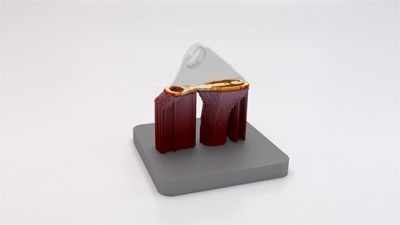 Indeed, manufacturing has come a long way since the days of the factory line. Today, manufacturing is building the future, and additive manufacturing (AM), or what we more commonly call 3D printing, is fast becoming the most exciting development in the sector.
Indeed, manufacturing has come a long way since the days of the factory line. Today, manufacturing is building the future, and additive manufacturing (AM), or what we more commonly call 3D printing, is fast becoming the most exciting development in the sector.
With endless potential uses in the medical, aerospace, and automotive industries, amongst many more, Sohail’s story is but one of many.
3D printing in healthcare
One such case study of Hexagon’s end-to-end AM solutions for healthcare is with a renowned hospital in Bangalore, in the 3D printing of custom joint replacements and implants.
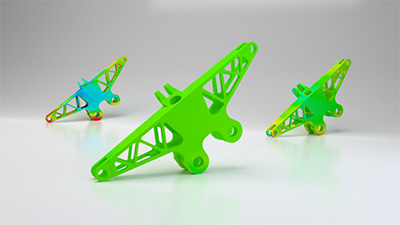 Today, many standard joint replacements repeatedly fail to last and provide comfort to the patient, due to the fact that every one’s body is different and there is no one-size-fits-all. With AM, custom-made 3D printed implants give more flexibility, comfort and life to patients. (source)
Today, many standard joint replacements repeatedly fail to last and provide comfort to the patient, due to the fact that every one’s body is different and there is no one-size-fits-all. With AM, custom-made 3D printed implants give more flexibility, comfort and life to patients. (source)
This is but one of many potential uses of AM in healthcare; AM can be used to manufacture highly-specialised, highly-complex medical equipment with unerring accuracy, for example. Not only that, doctors and surgeons can use 3D printed prototypes of patients’ organs, tissues or body for research, analysis, prototyping or even surgery preparation, thus enabling 3D visualisation for improved accuracy and reducing error.
For example, in India, doctors are creating 3D models of patients’ organs or bodies from CT scan data to prepare and more accurately perform complicated surgeries. (source). In one instance, doctors created a 3D model of a patient’s pelvis for a particularly tricky hip replacement procedure. The model was created in a matter of days, and enabled the surgeon to plan well ahead and more carefully before performing surgery, thus cutting down surgery time and errors.
Another use of 3D printing in healthcare is in new surgical tools and techniques. New biocompatible medical 3D printing materials have now allowed new developments in the surgery experience; 3D printing is used to print sterilizable fixation trays, contouring templates, and implant sizing models, helping surgeons reduce time and increase accuracy of complex procedures. (source)
3D printing is also showing potential in the manufacturing of affordable and customised prostheses, corrective insoles and orthoses– which currently are incredibly expensive and take a long time to produce.
In terms of medical research, 3D printing can also be used to quickly and affordably manufacture working prototypes for new inventions. In fact, experts are saying that 3D printing is now becoming a synonym for rapid prototyping– it is easy to use and relatively low-cost, thus revolutionising product development.
It has been reported, too, that a majority of some of the top medical device companies in the world have been using 3D printing to create accurate prototypes of medical devices, as well as jigs and fixtures. (source)
AM leads the charge into the future of manufacturing
To be sure, additive manufacturing is gaining incredible traction.
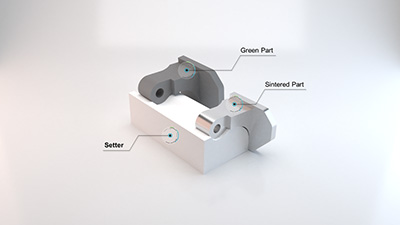 In 2019, an Ernst & Young report found that AM has attracted such exposure that almost two-thirds (65%) of businesses they surveyed have now tried applying the technology in business — nearly triple from 2016. Valued at more than USD7 billion as of 2017, the AM industry is expected to reach USD 35.6 billion by 2023 worldwide, with expenditure on AM crossing USD3.6 billion in 2021 in the Asia-Pacific region. (source)
In 2019, an Ernst & Young report found that AM has attracted such exposure that almost two-thirds (65%) of businesses they surveyed have now tried applying the technology in business — nearly triple from 2016. Valued at more than USD7 billion as of 2017, the AM industry is expected to reach USD 35.6 billion by 2023 worldwide, with expenditure on AM crossing USD3.6 billion in 2021 in the Asia-Pacific region. (source)
3D printing in healthcare, in particular, was valued at USD1,036.58 million in 2020, and is projected to reach USD5,846.74 million by 2030, growing at a CAGR of 20% from 2021 to 2030 (source)
Already we are seeing how productivity gains can be achieved with advanced technologies in the AM space. For example, Hexagon’s new Generative Design Solution cuts AM design processes by up to 80 per cent-– as the MSC Apex Generative Design produces stress-optimised, 3D printable designs automatically to reduce design cycles from days to hours. (source)
In fact, productivity improvements may be up to 80 per cent compared to classic topology optimisation. The software produces a part design that is ready for additive manufacturing (DfAM) within a few hours – a fraction of time usually required – making reliable additive manufacturing more cost efficient and accessible.
In MSC Apex Generative Design, the designer only needs to specify the boundary conditions and design objectives. Multiple lightweight design candidates that explore the possibilities of the design space will be produced that provide optimal stress distribution and minimise weight.
This enhances the creative process, so designers have more time to optimise the product’s concept and integrate additional features that add value. The software’s intelligent smoothing technology ensures that every candidate has a perfect finish that is ready for print.
In addition, solutions in advanced simulation processes continue to aid the growth of AM. For example, Simufact Additive is a powerful and scalable software solution for the simulation of metal-based additive manufacturing processes, which enables smooth metal 3D printing with high dimensional accuracy and quality.
There is also Digimat-AM, which is a solution of Digimat Software that simulates the printing process and helps printer manufacturers and end-users identify manufacturing issues, while optimising printing parameters for productivity and precision. In this way, Hexagon provides an end to end solution for OEM, Service Bureau and Research Institutes with its hardware and software solutions.
Without a doubt, AM is showing great promise in healthcare innovation and is certain to revolutionise the medical industry – all geared towards better well-being for humankind.




